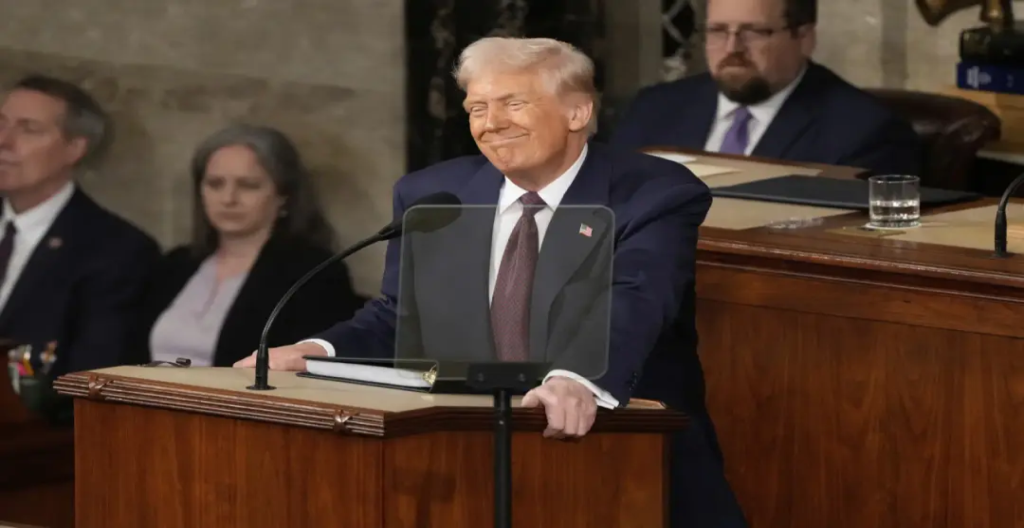Mexico’s Oil Pivot: Sheinbaum Eyes Asian and European Buyers Post-Trump Tariffs 25
After Trump’s tariffs, Mexico seeks Asian and European crude oil buyers
In light of recent economic pressures from the U.S., particularly after Trump’s tariffs, Mexican President Claudia Sheinbaum is shifting the country’s oil export strategy. She is now focusing on attracting buyers from Asia and Europe. This pivot aims to reduce dependency on the U.S. market and explore new opportunities in international trade, which could reshape Mexico’s energy landscape moving forward.
Key Takeaways
- Claudia Sheinbaum is pivoting Mexico’s oil exports towards Asian and European markets after Trump’s tariffs.
- The U.S. tariffs have forced Mexico to rethink its trade relationships and seek diversification.
- Sheinbaum’s administration is focusing on sustainable energy policies while boosting oil exports.
- Mexico is looking to strengthen ties with countries in Asia and Europe to offset U.S. trade pressures.
- The future of Mexican oil exports will depend on global market trends and demand from new partners.
Claudia Sheinbaum’s Strategic Shift in Oil Exports

Emphasizing Asian Markets
Mexico is looking East. With potential tariffs looming, Claudia Sheinbaum is seriously considering expanding oil exports to Asian markets. China and India are prime targets, given their growing energy demands. The idea is to reduce reliance on the U.S. and diversify revenue streams. It’s not just about selling more oil; it’s about building stronger economic ties with these nations. This could involve long-term contracts and strategic partnerships to ensure a stable market for Mexican crude.
Targeting European Buyers
Europe is another key area of focus. Several European countries are actively seeking to diversify their energy sources, presenting an opportunity for Mexico. Sheinbaum’s administration plans to engage in active negotiations with European nations to secure favorable trade agreements. This includes countries like Spain, Germany, and the Netherlands, which have significant refining capacity and a need for stable oil supplies. The goal is to establish Mexico as a reliable energy partner in the European market.
Navigating Post-Tariff Challenges
Trump’s tariffs, like the tariff threat on Mexican goods, present a significant challenge. Sheinbaum’s strategy involves several key steps to mitigate the impact:
- Diversifying export markets to reduce dependence on the U.S.
- Investing in domestic refining capacity to add value to crude oil.
- Seeking international arbitration to challenge unfair trade practices.
- Strengthening trade relationships with non-U.S. partners.
The long-term goal is to build a more resilient and diversified oil industry that can withstand external shocks. This requires a combination of strategic partnerships, infrastructure investments, and proactive diplomacy.
Ultimately, Sheinbaum’s approach is about ensuring Mexico’s energy independence and economic stability in a changing global landscape.
Impact of Trump’s Tariffs on Mexico’s Oil Industry
Economic Ramifications
Trump’s tariffs sent shockwaves through Mexico’s oil sector. The immediate effect was a decrease in revenue as Mexican crude became more expensive for US buyers. This created a ripple effect, impacting Pemex’s budget and potentially leading to cuts in investment for exploration and production. The economic ramifications extended beyond just oil sales, affecting related industries like transportation and refining. The tariffs also put pressure on the Mexican peso, further complicating the economic landscape.
Shifts in Trade Relationships
The tariffs forced Mexico to rethink its reliance on the US market. It accelerated the search for alternative buyers, particularly in Asia and Europe. This shift wasn’t just about finding new customers; it was about diversifying risk and reducing dependence on a single, potentially volatile market. Mexico began actively seeking new buyers for its crude oil, engaging in diplomatic efforts to secure long-term contracts with countries like India, China, and several EU members.
Long-Term Strategies for Recovery
Mexico adopted several strategies to mitigate the long-term impact of the tariffs. These included:
- Investing in infrastructure to improve export capabilities to non-US markets.
- Negotiating trade agreements with other countries to reduce reliance on the US.
- Focusing on value-added products, such as refined fuels, to increase revenue.
The tariffs served as a wake-up call, highlighting the need for Mexico to modernize its energy sector and reduce its vulnerability to external shocks. This involved not only diversifying export markets but also improving domestic refining capacity and exploring renewable energy sources.
Here’s a simplified view of the tariff impact:
| Tariff Scenario | US Market Share | Revenue Impact | Diversification Efforts |
|---|---|---|---|
| Pre-Tariff | 70% | Baseline | Limited |
| Post-Tariff | 50% | -20% | Accelerated |
Diversifying Trade Partners Beyond the U.S.
It’s no secret that Mexico has been heavily reliant on the U.S. for its oil exports. But with potential tariffs looming, Claudia Sheinbaum is looking to spread the risk and find new customers around the globe. This isn’t just about damage control; it’s about building a more resilient and diversified economy for the future.
Engagement with Asian Nations
Mexico is seriously eyeing Asian markets, particularly China and India, which have a growing appetite for energy. These countries represent huge potential for Mexican crude oil exports. It’s not just about selling more oil; it’s about establishing long-term partnerships that can weather any storms. Think about it: diversifying into Asia means Mexico isn’t putting all its eggs in one basket.
Strengthening Ties with Europe
Europe is another key target. Several European nations are looking to diversify their energy sources, and Mexico could be a reliable supplier. This involves not just selling oil, but also engaging in diplomatic efforts to build trust and secure long-term contracts.
It’s worth noting that Mexico already has a free trade agreement with the European Union, and there’s potential to expand this agreement to include more energy-related provisions. This could make it easier for Mexican oil companies to access European markets and compete with other suppliers.
Exploring New Markets in the Middle East
While Asia and Europe are the primary focus, Mexico is also exploring opportunities in the Middle East. This region is a major player in the global energy market, and there may be opportunities for Mexico to collaborate with Middle Eastern countries on energy projects or to sell its oil to these nations.
Here’s a quick look at potential new markets:
- China: Huge and growing demand.
- India: Similar to China, with increasing energy needs.
- Europe: Diversifying away from Russian energy.
- UAE: Potential for collaboration and trade.
Mexico’s Energy Policy Under Sheinbaum
Focus on Sustainability
Sheinbaum’s administration is expected to place a significant emphasis on sustainable energy practices. This includes promoting cleaner energy sources and reducing reliance on fossil fuels. The goal is to create a more environmentally responsible energy sector. This shift aligns with global efforts to combat climate change and reduce carbon emissions. It’s a big change from previous administrations.
Investment in Renewable Energy
A key component of Sheinbaum’s energy policy is increased investment in renewable energy sources. This includes solar, wind, and hydroelectric power. The government is likely to offer incentives for private companies to invest in these areas. This could create new jobs and boost the economy. Here’s a quick look at potential investment areas:
- Solar energy projects in northern Mexico
- Wind farms along the Gulf Coast
- Modernization of existing hydroelectric plants
Balancing Domestic and Export Needs
Mexico faces the challenge of balancing its domestic energy needs with its desire to export oil. Sheinbaum’s administration will need to find a way to ensure that Mexico has enough energy to power its own economy while still capitalizing on its oil reserves. This could involve:
- Increasing domestic refining capacity
- Negotiating favorable export agreements
- National development strategy to ensure energy security
It’s expected that Sheinbaum will try to strike a balance between maximizing oil revenue and investing in renewable energy. This will be a difficult task, as it requires careful planning and execution. The success of her energy policy will depend on her ability to navigate these competing priorities.
The Role of International Relations in Oil Sales

Diplomatic Efforts with Asian Countries
Let’s be real, selling oil isn’t just about finding someone who needs it; it’s a whole diplomatic dance. When it comes to Asian countries, Mexico’s got to play its cards right. It’s about building trust, understanding their energy needs, and showing that Mexico is a reliable partner. Think long-term relationships, not just quick sales.
Negotiations with European Nations
Europe’s a different ballgame. They’re pushing for greener energy, so Mexico needs to show it’s not just about pumping out crude. It’s about demonstrating a commitment to sustainability, maybe even offering deals that include investments in renewable energy projects. It’s a tougher sell, but a potentially more rewarding one. The revamped Mexico-EU agreement will remove tariffs on agricultural products and ease companies’ abilities to bid on public contracts in partner countries.
Influence of Global Oil Prices
Global oil prices? They’re the wild card. Mexico can have the best relationships in the world, but if prices tank, everyone feels the pinch. It’s about being smart, watching the market, and having a strategy to weather the storms. Diversifying markets helps, so you’re not relying on just one buyer. It’s also about being efficient, keeping production costs down, and making sure you’re competitive. The U.S. auto needs a big Trump-China deal.
International relations are key to Mexico’s oil sales. It’s not just about the oil itself, but about building trust, understanding needs, and navigating the complex world of global politics and economics. It’s a long game, and Mexico needs to play it smart.
Here’s a quick look at how oil prices can affect things:
- Lower prices can strain government budgets.
- Higher prices can boost revenue but also attract competition.
- Stable prices allow for better planning and investment.
Future Prospects for Mexican Crude Oil Exports
Market Trends in Asia and Europe
The future of Mexican crude oil exports hinges significantly on market trends in Asia and Europe. Demand in Asia, particularly from countries like India and China, is projected to remain strong, offering a viable alternative to reliance on the U.S. market. European demand, while potentially more sensitive to environmental concerns, still presents opportunities, especially for countries seeking to diversify their energy sources. Monitoring these trends is crucial for Mexico to adapt its export strategies effectively.
Potential for Increased Demand
Several factors could drive increased demand for Mexican crude oil in the coming years. These include:
- Geopolitical instability in other oil-producing regions.
- Growth in developing economies.
- The gradual phasing out of older, less efficient refineries that rely on heavier crude.
Mexico’s ability to capitalize on these opportunities will depend on its capacity to ensure a stable and reliable supply, as well as its willingness to adapt to changing market demands.
Challenges Ahead for Mexican Oil
Despite the potential for growth, Mexican oil exports face several challenges. These include competition from other oil-producing nations, the need to invest in infrastructure to increase production capacity, and the increasing global focus on renewable energy sources. Successfully addressing these challenges will be vital for Mexico to maintain and expand its presence in the global oil market.
Sheinbaum’s Vision for Mexico’s Energy Future
Long-Term Goals for Oil Exports
Sheinbaum’s administration is setting ambitious, yet realistic, goals for Mexico’s oil exports. The focus isn’t just on volume, but on value and diversification. The aim is to secure long-term contracts that provide stable revenue streams while reducing reliance on any single market. This involves a strategic approach to pricing, contract terms, and building strong relationships with key buyers. Pemex is already exploring new markets in Asia and Europe.
Integrating Environmental Concerns
Sheinbaum recognizes the growing global emphasis on sustainability. Her vision includes gradually shifting Mexico’s energy sector towards cleaner sources. This doesn’t mean abandoning oil exports overnight, but rather implementing policies that encourage responsible extraction, reduce emissions, and invest in renewable energy projects. This transition is viewed as a long-term project, balancing economic needs with environmental responsibility.
Building Resilience Against Tariffs
Trump’s tariffs served as a wake-up call, highlighting the vulnerability of Mexico’s economy to external pressures. Sheinbaum’s strategy involves building resilience through diversification, strengthening domestic industries, and fostering international partnerships. This includes:
- Developing alternative export markets.
- Investing in infrastructure to support trade diversification.
- Negotiating trade agreements that protect Mexico’s interests.
The goal is to create a more robust and adaptable economy that can withstand future trade disputes and economic shocks. This involves a multi-faceted approach, combining proactive diplomacy, strategic investments, and a commitment to sustainable development.
Looking Ahead: Mexico’s Strategic Shift
As Mexico adapts to the changing landscape of international trade, Sheinbaum’s focus on Asian and European markets marks a significant shift. The country is clearly looking to reduce its reliance on the U.S., especially with the looming threat of tariffs. By diversifying its partnerships, Mexico aims to create a more stable economic future. This pivot could open new doors for trade and investment, but it also comes with its own set of challenges. As the global market evolves, Mexico’s ability to navigate these changes will be crucial for its economic health.
Frequently Asked Questions
What is Claudia Sheinbaum’s plan for Mexico’s oil exports?
Claudia Sheinbaum aims to shift Mexico’s oil exports towards Asian and European markets, especially after facing challenges from U.S. tariffs.
How have Trump’s tariffs affected Mexico’s oil industry?
Trump’s tariffs have created economic difficulties for Mexico’s oil sector, pushing the country to seek new trading partners.
Why is Mexico diversifying its trading partners?
Mexico is diversifying its trading partners to reduce reliance on the U.S. and to find new markets in Asia and Europe.
What changes is Sheinbaum making in Mexico’s energy policy?
Sheinbaum is focusing on sustainability and investing in renewable energy while balancing the needs of domestic and export markets.
How does international relations impact Mexico’s oil sales?
Mexico’s diplomatic efforts with Asian and European countries play a crucial role in boosting oil sales and navigating global oil prices.














4 comments